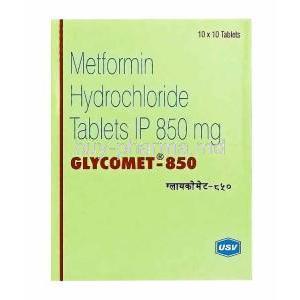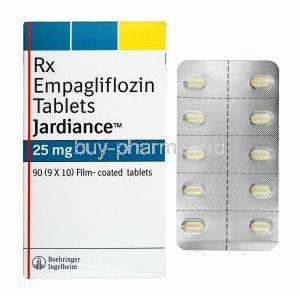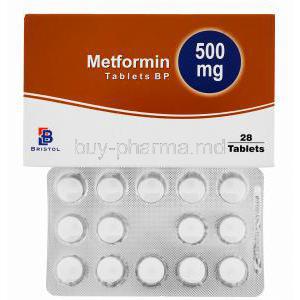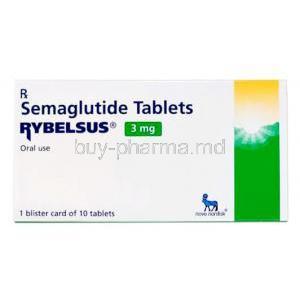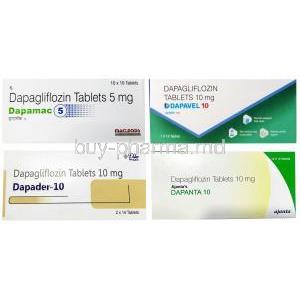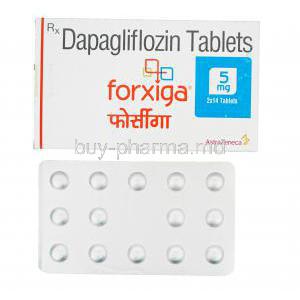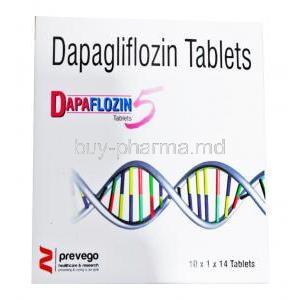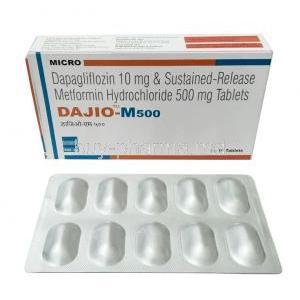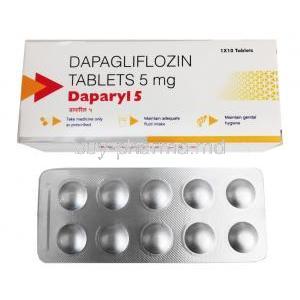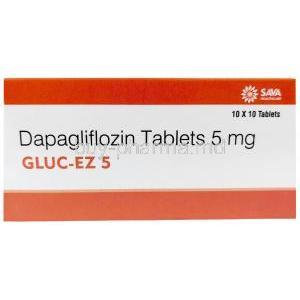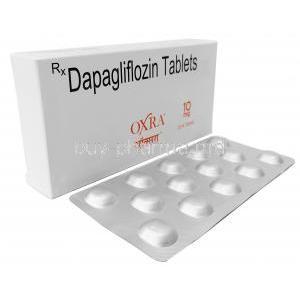1. Introduction to Rosiglitazone Maleate
Rosiglitazone Maleate is an oral antidiabetic medication used to manage blood glucose levels in individuals with type 2 diabetes mellitus (T2DM). Belonging to the thiazolidinedione (TZD) class, this drug addresses insulin resistance—a hallmark of T2DM—by enhancing the body's sensitivity to insulin.
Originally introduced in the late 1990s, Rosiglitazone was once widely prescribed but later faced scrutiny due to cardiovascular safety concerns. Despite this, regulatory agencies such as the FDA and EMA have continued to permit its use under restricted guidelines, emphasizing individualized risk assessment.
Rosiglitazone is available as a standalone therapy and in fixed-dose combinations, particularly with metformin. Its formulation and availability may vary across regions, but it remains a valuable therapeutic option in diabetes management worldwide.
2. Therapeutic Uses of Rosiglitazone Maleate
2.1 Approved Medical Uses
- Indicated for the treatment of type 2 diabetes mellitus, especially in patients who do not achieve adequate glycemic control with diet and exercise alone.
- Can be used as monotherapy or combined with metformin, sulfonylureas, or insulin to improve glycemic parameters.
- Particularly effective in patients exhibiting marked insulin resistance, contributing to lower fasting blood glucose and HbA1c levels.
2.2 Off-Label Uses of Rosiglitazone
- Polycystic Ovary Syndrome (PCOS): Helps improve insulin sensitivity and ovulatory function in women with PCOS.
- Non-Alcoholic Fatty Liver Disease (NAFLD) and NASH: Shows promise in improving liver histology and reducing hepatic steatosis.
- Diabetes Prevention: Studied in high-risk individuals for delaying or preventing the onset of T2DM.
- Metabolic Syndrome: Used as an adjunct therapy to address insulin resistance and dyslipidemia.
- Experimental Indications: Under investigation for roles in Alzheimer’s disease and muscle wasting conditions such as cancer cachexia.
3. Rosiglitazone Mechanism of Action
Rosiglitazone exerts its effects through selective activation of peroxisome proliferator-activated receptor gamma (PPAR-γ), a nuclear receptor predominantly expressed in adipose tissue. Once activated, PPAR-γ influences the transcription of insulin-responsive genes that regulate glucose and lipid metabolism.
This mechanism promotes:
- Enhanced insulin sensitivity in adipocytes, skeletal muscle, and liver cells
- Reduction in hepatic glucose output
- Improved lipid profile through modulation of triglyceride and HDL levels
- Anti-inflammatory effects that may benefit vascular health
4. Dosage and Administration Guidelines
4.1 Standard Adult Dosing
- Initial dose: 4 mg once daily or in two divided doses
- Titration: May be increased to 8 mg/day after 8 to 12 weeks if glycemic goals are not achieved
- Maximum daily dose: 8 mg
- Dose adjustments may be necessary in cases of concurrent drug therapy or side effects
4.2 Administration Instructions
- Administer orally, with or without food
- Encourage consistent dosing time to maintain stable plasma levels
4.3 Missed Dose and Discontinuation Protocol
- If a dose is missed, take it as soon as remembered unless it's near the time of the next dose
- Do not double dose
- Discontinuation should be guided by a healthcare professional due to potential rebound hyperglycemia
5. Composition and Formulation of Rosiglitazone
Rosiglitazone Maleate is the active pharmaceutical ingredient formulated into oral tablets. It is available in various strengths to support titration and individualized therapy.
- Available strengths: 2 mg, 4 mg, and 8 mg tablets
- Inactive ingredients may include lactose monohydrate, microcrystalline cellulose, magnesium stearate, and other excipients depending on the manufacturer
- Combination products: Rosiglitazone is co-formulated with metformin in some brands to offer dual insulin-sensitizing effects
6. Rosiglitazone Side Effects
6.1 Common Side Effects
Most patients tolerate Rosiglitazone well, but some may experience mild to moderate side effects such as:
- Headache and dizziness
- Fatigue and general malaise
- Weight gain, primarily due to fluid retention
- Peripheral edema
- Mild hypoglycemia, particularly when used with sulfonylureas or insulin
6.2 Serious Adverse Effects
More severe reactions, though less common, warrant immediate medical evaluation:
- Congestive Heart Failure: Due to fluid overload and cardiac stress, especially in patients with pre-existing heart disease
- Myocardial Infarction: Some studies have raised concerns about increased risk of ischemic events
- Hepatic Dysfunction: Rare cases of liver injury have been reported; liver enzymes should be monitored regularly
- Macular Edema: May cause visual disturbances; regular eye exams are recommended
7. Drug Interactions and Incompatibilities
Rosiglitazone may interact with a variety of medications, necessitating close monitoring and dose adjustments.
- Insulin: Increased risk of fluid retention and heart failure when used together
- Other Antidiabetics: Additive effects on blood sugar lowering may lead to hypoglycemia
- CYP2C8 Inhibitors (e.g., gemfibrozil): May increase Rosiglitazone plasma concentration
- CYP2C8 Inducers (e.g., rifampin): May reduce therapeutic efficacy
- NSAIDs, corticosteroids, and thiazide diuretics: Can antagonize Rosiglitazone's effects or contribute to edema
8. Warnings and Contraindications
8.1 Black Box Warnings and Cardiovascular Risk
Rosiglitazone carries a prominent black box warning due to its association with serious cardiovascular risks. The drug has been linked to an increased likelihood of heart failure, especially in patients with underlying cardiac conditions. Clinical evidence suggests a heightened incidence of ischemic events, including myocardial infarction, particularly when used in combination with insulin.
- Increased incidence of congestive heart failure due to fluid retention
- Potential elevation in the risk of myocardial ischemia and infarction
- Routine cardiovascular assessment is essential prior to initiating therapy
8.2 Contraindications
Rosiglitazone is contraindicated in several patient populations where the risk of adverse outcomes outweighs the benefits. Clinicians should carefully screen for the following conditions before prescribing:
- Documented hypersensitivity or allergic reaction to rosiglitazone or any of its components
- History of New York Heart Association (NYHA) Class III or IV heart failure
- Presence of active liver disease or significantly elevated liver transaminases (ALT >2.5× upper limit of normal)
9. Special Considerations for Use
9.1 Careful Administration in At-Risk Populations
Rosiglitazone should be used with caution in patients who exhibit baseline risk factors for complications. Proactive monitoring and individualized dosing are essential to reduce the likelihood of serious events.
- Closely monitor patients with a history of fluid retention or peripheral edema, as they are prone to exacerbation
- Use with caution in individuals with hepatic impairment; periodic liver enzyme testing is required
- Assess cardiovascular risk using validated tools before initiating therapy in susceptible individuals
9.2 Important Precautions During Therapy
During the course of treatment, continuous monitoring helps ensure safety and timely detection of complications.
- Conduct regular liver function tests to monitor hepatic health
- Observe for signs of fluid overload, including rapid weight gain and shortness of breath
- Monitor hematologic parameters such as hemoglobin and hematocrit, as the drug may cause hemodilution or anemia in some patients
10. Use in Special Populations
10.1 Administration to Elderly Patients
Older adults often exhibit altered pharmacokinetics and are more susceptible to drug-related complications. When prescribing rosiglitazone to the elderly, careful titration and monitoring are warranted.
- Delayed drug clearance and altered metabolism may affect therapeutic outcomes
- Increased vulnerability to fluid retention and congestive heart failure
- Evaluate renal and cardiac function regularly to preempt complications
10.2 Use in Pregnant and Breastfeeding Women
Rosiglitazone is classified as a Pregnancy Category C drug, indicating that risk to the fetus cannot be ruled out. It should only be used during pregnancy if the potential benefit justifies the potential risk to the fetus.
- Animal studies have shown adverse fetal effects, though controlled human data are lacking
- Due to unknown excretion in breast milk, the drug is not recommended during lactation
- Alternative therapies with established safety profiles should be considered for pregnant or nursing women
10.3 Administration in Children and Adolescents
Rosiglitazone is not approved for use in pediatric populations due to insufficient data on safety and efficacy. However, in rare cases, off-label use may occur under specialist guidance.
- Lack of robust clinical trials in children and adolescents
- Use should be limited to highly selective scenarios with close endocrinological supervision
- Long-term safety profile in developing patients remains undetermined
11. Overdose and Emergency Management
In cases of overdose, prompt medical intervention is critical. Symptoms may range from mild to life-threatening depending on the amount ingested and the patient's comorbidities.
- Primary symptoms include hypoglycemia, fluid retention, and hypotension
- Treatment is primarily supportive, including glucose administration and monitoring of vital signs
- Emergency protocols should include fluid management, cardiac monitoring, and, if needed, hospitalization
12. Storage and Handling Instructions
Proper storage conditions are essential to maintain the drug’s stability and efficacy. Rosiglitazone tablets should be kept in their original packaging until use to avoid contamination or degradation.
- Store at controlled room temperature, ideally between 20°C to 25°C (68°F to 77°F)
- Protect from excessive moisture and direct sunlight
- Ensure the container is tightly closed to preserve tablet integrity
12.1 Handling Precautions for Rosiglitazone
Safe handling practices help protect caregivers and patients, particularly in institutional or home care settings.
- Dispose of unused or expired tablets according to local pharmaceutical waste protocols
- Caregivers should wash hands thoroughly after handling the medication
- Store medication out of reach of children and pets to prevent accidental ingestion
Rosiglitazone Maleate FAQ
What are the side effects of Rosiglitazone maleate?
The reported negative outcomes include elevated LDL cholesterol levels, increased HDL cholesterol levels, and higher total cholesterol levels. Less common side effects consist of swelling, high blood pressure, heart failure or congestive heart failure, myocardial ischemia, diarrhea and upper respiratory tract infections.
What is the difference between rosiglitazone and metformin?
Rosiglitazone improves the way your body utilizes insulin, while Metformin decreases sugar absorption in the stomach and limits the release of stored sugar in the liver, thereby enhancing your body's sugar utilization.
Why was rosiglitazone taken off the market?
Its use was linked to a chance of liver failure.


